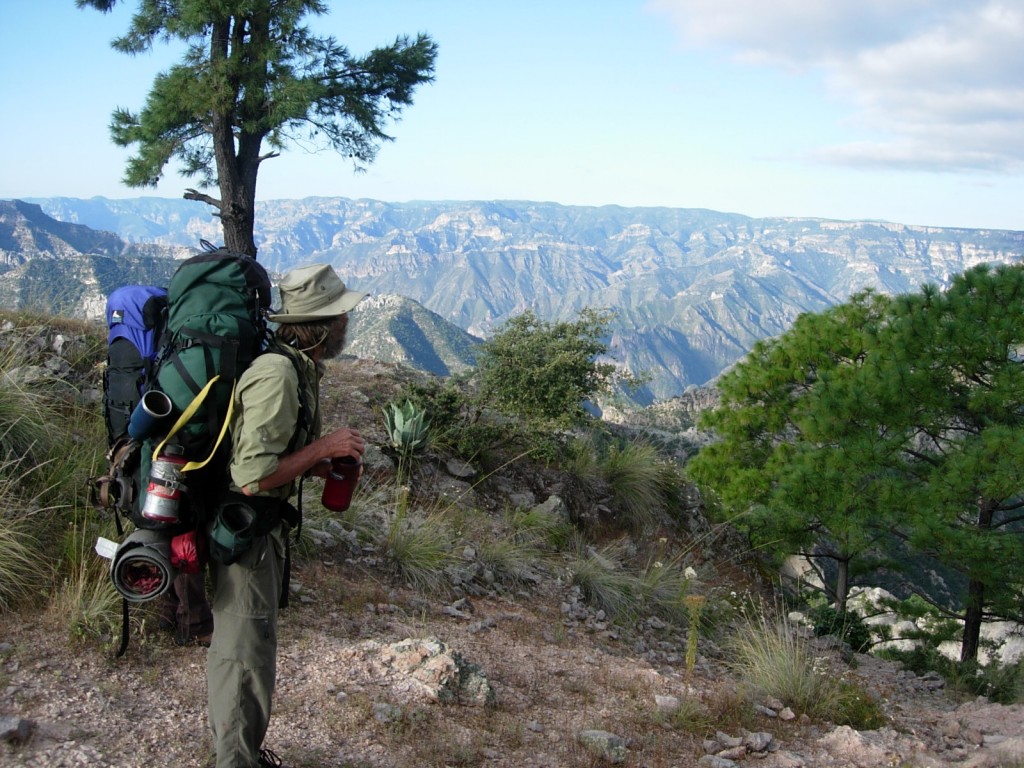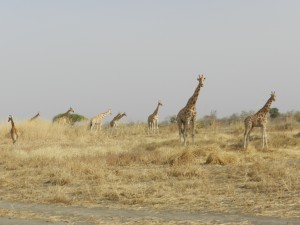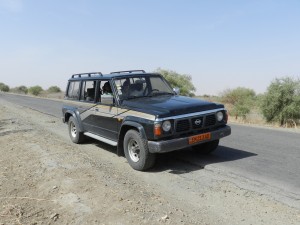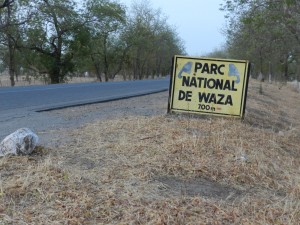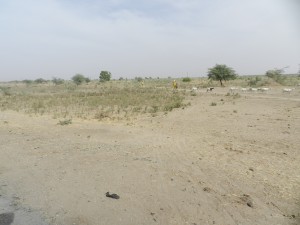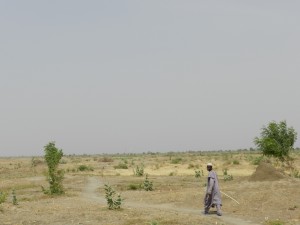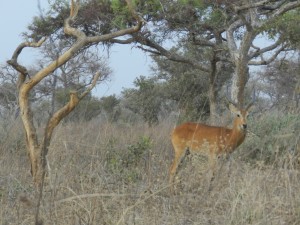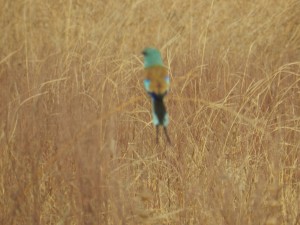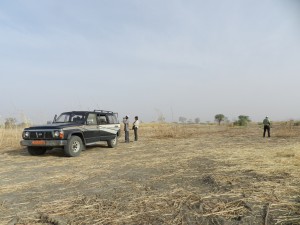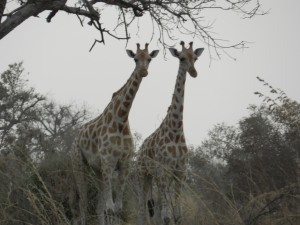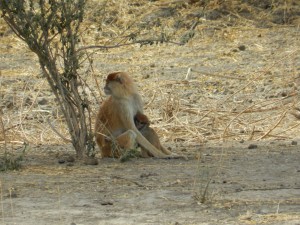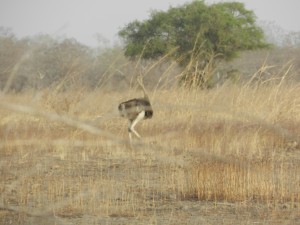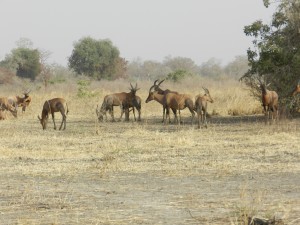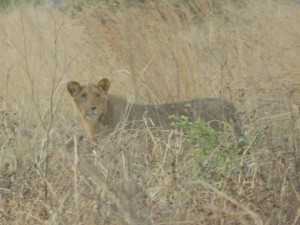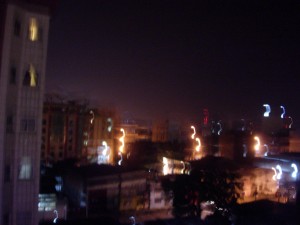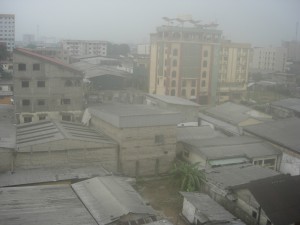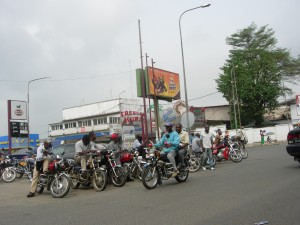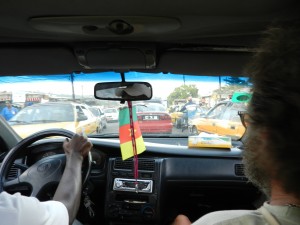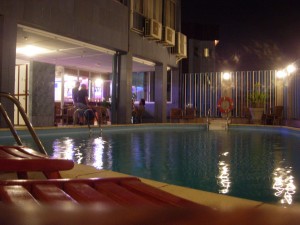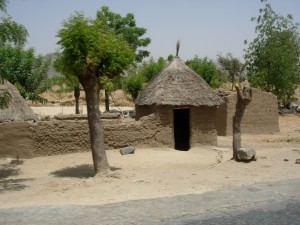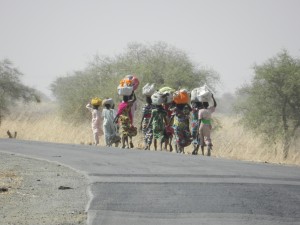Last weekend, I rented the much-anticipated movie version of Jack Kerouac’s seminal “On the Road.” Though I have never been the world’s most enthusiastic Kerouac fan, and though the movie did not especially appeal to me (at least partially because it did not stand alone very well; that is to say: a viewer would already have to be pretty familiar with Kerouac’s work in general, “On the Road” specifically and the macro-Kerouac mythos in order to “get it”), it did get me thinking about movement and lightness and, by extension, the possessions that sometimes weigh us down, especially as we age and become more sedentary.
At least I think that’s why I finally decided to write this story. Or maybe it’s that, having just successfully avoided any direct interactions with Black Friday and Cyber Monday (though, like most Americans, I was unable to avoid indirect interactions with the kickoff to what has lamentably become known as the “Holiday Shopping Season”), I am feeling ruminative about the entire concept of material acquisition, a subject that generally either bores me to tears, incites me to rage or inspires me to drink more than usual.
But, here’s the thing: Not all possessions are burdensome. Not all possessions weigh you down. Not all possessions possess their possessor. Three of the items I have treasured most in my life were mere pieces of paper, one of which had direct bearing to Kerouac and the cultural wake he left behind.
First things first.
Like many folks who came of age during the backsplash of the ’60s, which took a while to make their way to rural Gloucester County, Virginia, for most of my early adult life, I was one seriously mobile unit. As an example of simultaneous cause and effect, almost everything I owned fit nicely into a backpack and a trunk. If I planned to stay only a couple months wherever I was going — which was most often the case — the backpack was all I needed. Two pairs of ratty, thrift-shop-procured clothes. Down jacket. Ditty bag containing fundamental health and beauty aids. Cook kit with a cup and spoon. Sleeping bag and pad. Reading material and notebooks. Pipe and weed.
If I planned to park it for a full a season, which was generally as long as I stayed anywhere in those blurry days, I would have the trunk shipped in by bus by my mom and stepfather — both of whom were deep-rooted by nature — who likely spent much time wondering if their wayward son would ever apply the brakes long enough to leave a traceable forwarding address.
The trunk contained a few more changes of clothing, a portable record player, 50 or so of my favorite albums, an Underwood manual typewriter I bought for $40 at a pawn shop in Silver City while I was pretending to be a college student, a bong, a dictionary given to me as a high school graduation present by my mom and a Thesaurus given to me as a high school graduation present by a friend’s mom, a woman who was always ready to temporarily provide me with refuge when the hellfire of my fractured childhood home started burning a bit too hot.
It is axiomatic that a life on the road cannot include much in the way of personal effects. But that simplifies the situation for a great many of us. I did not travel lightly solely out of necessary expediency. There are two types of perpetual travelers: those more concerned with arriving and those more concerned with leaving. And I was a card-carrying member of the latter category, a man running from rather than to. Always leaving, always fleeing. When that’s your operational mindset, it’s not uncommon for stuff, sometimes important and cool stuff, to get left behind in a sometimes-frantic effort to find the closest exit.
The road giveth, and the road taketh away. That’s part of the deal.
1) Cecil and Alpine Beard lived about 10 miles outside remote Reserve, New Mexico, which, at that time, was a sometimes combustible sociological amalgam of multi-generational Anglo and Hispanic ranchers and Rainbow Family hippies. To get to their mostly rustic re-built adobe house (it had electricity and phone, but not much else in the way of modern amenities), you had to cross the San Francisco River a half-dozen times. Mostly, those crossings were easy, as the San Francisco is little more than a trickle up where the Beards lived. Sometimes, though, during monsoon season, the waters would rise to the point where Cecil and Alpine were cut off from civilization, such as it is in that part of the world, for days at a time, which suited them just fine, even though, by the time I made their acquaintance, they were in their mid-70s. Cecil and Alpine had moved to their compound in the middle of some of New Mexico’s most-nowhere nowhere in 1967 from the urban craziness of southern California, where Cecil worked for five years — from about 1935-40 — as an animator for Walt Disney Studios.
Cecil had been working as a muralist in Dallas when he saw an ad in a local paper soliciting applications for cartoonists for the brand-new Disney Studios in Los Angeles. He called and was hired on the phone.
His first assignment with Disney was to work on what many people have called the most-outstanding full-length animated movie ever made: “Snow White.” After that, he was assigned to another noteworthy Disney animated creation: “Bambi.”
Cecil left Disney shortly after “Bambi” was released to embark upon what ended up being his career right up till the point when I met him and Alpine: He became a professional creator of comic books.
I visited Cecil and Alpine three or four times, interviewing them for stories for the El Paso Times, where I was working as a reporter, and New Mexico magazine. Though they were very private people who, as they told me on several occasions, really didn’t like company, they were graciousness incarnate. Even though I was at that point in my life still what one lady friend described as a “wild child,” I was intrigued by the Beard’s living situation, which was all the more captivating to me because it was clutter free. Until then, I had always associated long-term domesticity with perpetual accumulation. But, not the Beards. They had no TV or music system. Their furnishings were simple and sparse. And it wasn’t because, like so many of the hippies living in Catron County at that time, they could afford no other lifestyle option. Though I of course never asked about their income, they worked every day. For many years, they completed a dozen comic books per month. By the time I met them, they were down to one a week. They had the bearing of people who were fiscally comfortable.
“Bugs Bunny,” “The Roadrunner” and “Dennis the Menace” were their staples. Sometimes Cecil would come up with the plots; sometimes Alpine would. Cecil would then do a rough set of storyboard illustrations. They would package them up and send them off during their twice-monthly journeys into Reserve. They never saw the finished products. Didn’t care to. And, even though several of their stories were eventually made into television specials, their TV-lessness prevented them from eyeballing the fruits of their labor. Checks came as regularly as comic books went out. And life was good.
The last time I visited the Beards, I could tell they were getting a tad impatient with my endless series of journalistic interrogatives. They never overtly pointed me toward the door, but an unmistakable hint was dropped when Cecil told me that he and Alpine would like to give me a “parting gift.” He pulled out two pieces of old rolled-up sketchbook paper and handed them to me. I carefully unrolled the almost-brittle pages and found upon them numerous pencil drawings of a certain well-known baby deer character. What Cecil and Alpine Beard had given me were two of the original sheets upon which the character of “Bambi” was being brought to life. “Bambi’s” final form had not yet been determined. There were probably 15 different versions of “Bambi,” some rough, some honed, some drawn by Cecil, some drawn by other Disney animators.
This was a splendid gift indeed, but one that I really did not know how to integrate into my wild-child life.
Over the course of the next couple years, I lived in a utility-less camper trailer way out in the desert, got laid off from my gig at the El Paso Times, worked on a juvenile-delinquent-rehabilitation wagon train in Nevada, moved to Denver — with, yes, nothing more than a backpack and trunk — where I slept on a friend’s couch till I could afford a hovel of my own, worked as a busboy in one of the Mile High City’s first high-end yuppie/snob restaurants, sold blood plasma to help make ends meet and, eventually, moved to a non-winterized cabin in the Colorado High Country — with, yes, nothing more than a backpack and a trunk — where I took a gig as a reporter for a small-town weekly paper. Less than a month later, I met the woman who would become Mrs. Hyphenated-Fayhee. Gay and I rented an ancient 36×8 trailer in Grand Lake, a tight-quarters living arrangement that necessitated a minimalist lifestyle. The following fall, we put all our shit into storage in the basement of Gay’s dad’s dental office and embarked upon a meandering multi-month foray that took us as far south as Costa Rica.
Somewhere along the line, those drawings of “Bambi” went their own way. There’s a good possibility they were horked by a roommate, as the non-winterized cabin I called home for most of the rough winter of 1983-84 was more like a dormitory, with roommates coming and going so fast, it was not unusual to find yourself cooking next to someone whose name you did not know. And it would not have been the first time that items stored in the basement of Gay’s dad’s dental office went missing. Or maybe I simply accidentally threw those irreplaceable drawings away. Who knows? They were gone. They are still gone.
I heard several years later that Cecil had passed away and that Alpine, feeling it prudent to dwell a bit closer to fellow humans as she passed her eighth decade, sold her house outside Reserve and moved to Pleasanton, New Mexico — which is not exactly Manhattan — where she, too, eventually succumbed.
Every time I have told this story in the presence of my wife, a woman who loved “Bambi” so much that she named her all-time best cat “Flower,” after a skunk that was a major character in the movie, her eyes tear up because it seriously makes her wonder about the psychic constitution of the man with whom she shares her life. I mean, who the fuck would lose original drawings of “Bambi” given to him by one of the people who worked on that movie? And this very reasonable question/concern transcends by leaps and bounds the very real observation that those drawings might actually be worth some money.
There are some things in the world that are so intrinsically and inherently wonderful, they deserve focused attention, protection and preservation, even by someone who was at that time predisposed to run like the wind whenever his backpack and trunk got even a little bit too heavy. I could have put them in a safety deposit box, even though I did not have a bank account. I could have sent them home to Virginia for safekeeping in a house that was always one drunken mental meltdown away from volcanic eruption. Fuck, I could have given them to a random person on the street in hopes they would at least survive.
Yet I did none of that.
I suspect my wife has long wondered, if I could be so cavalier with something so obviously and blatantly precious, what else could I leave behind?
It’s amazing how heavy paper can be.
2) Many are the people who rationally contend that, if you can travel together under arduous circumstances as a couple without negative reactions and consequences, then you are perhaps meant to be together. Or at least there’s hope. There are those who argue that, if you can’t travel together, then there is no hope, which may or may not be pretty much the same thing. When Gay and I were planning the multi-month journey that would eventually take us as far south as Costa Rica, we decided to invite my long-time amigo Norb and his wife Lori, partly because Norb was an aspiring photographer and I was looking at the trip through a journalistic lens, partly because, since we were going to be traveling through the heart of Central America’s Contra-era craziness, it seemed like a good idea to have more people in our group and partly because I think I was somewhat fretful about being alone for that long with one person. This marked the first time I had ever planned a journey with another person, much less a love interest. Until that point, my travels had always been solitary.
The first stop was in northern Mexico, a place I vaguely remembered some of my college chums talking about. A place called Copper Canyon. Though we did have with us a first-generation Hilary Bradt guidebook to the national parks of Central America, we had no orientational material whatsoever regarding Mexico. We flew from Denver to El Paso, crossed the Staunton Street Bridge into Juarez as the sun set, took a redeye bus to Chihuahua City and then hooked up with world-famous Chihuahua al Pacifico Railroad, which deposited us in a ramshackle trackside town called Creel.
There was no way I could possibly have known, could possibly even have guessed, the part that Creel would come to play in my professional life. At that point, it was yet another place I was passing through on my way to somewhere else. We got a room in the Hotel Nuevo and, having been up all night, slept most of the afternoon. Since there were then no maps of the area (man, I miss those days), at dinner at Lupita’s, we asked rudimentary tourist questions of the staff and learned that, about 10 miles south of town, there was a pretty little lake, called Arareco, where we could camp. From there, we were told, we could access Copper Canyon itself.
“Como — how?” I, being the closest thing to a Spanish speaker in our group, queried.
“Como quieren — however you want,” was the poetically cryptic response.
“Well,” thought I, “that IS the best way to get someplace.”
We hoisted our packs the next morning and began to walk down a lonely dirt road — now a busy paved highway — toward the lake. Before we passed out of Creel, we were approached by a Tarahumara Indian man who was so drunk, he could barely stand. He had puke spittles dried on his lips and breath that could knock a buzzard off a shitwagon. His eyes were blood red and wild. And he was belligerent and confrontative. Though I did not and still do not know more than a handful of words of Tarahumara, it was clear as a bell that he was cursing our existence in general and our existence in this particular neck of the woods specifically. We tried to calm him down, to explain to him in a language he did not comprehend that we were just passing through and that we meant no harm and that, basically, if he did not get the fuck out of our faces, Norb and I were going to pummel his drunken, belligerent, diminutive ass right there on the side of the road.
At that, he seemed to take even more offense. He pulled his fist back so far he likely strained his shoulder, apparently preparing to launch a haymaker in my general direction that took so long to engage, my grandmother could have blocked it with her cane. But there was no opportunity to block it, as the momentum of his backswing was such that the inertia carried him ass over teakettle backwards down a steep and fairly long embankment and deposited him unceremoniously in a rocky ravine. Once the dust settled, he did not move. He appeared to be dead. For about point-two seconds, we considered climbing down to take his pulse and perhaps resuscitate his seeming lifeless corpse, but thought better of it, as surely such a benevolent act on our part would invariably lead to an interface with local officialdom, something we wanted to avoid at all costs. Rationally figuring that a visit to the local hoosegow on a suspected charge of murdering a drunk local was not the best way to kick off our journey, we sauntered on as though nothing had happened.
Shortly thereafter, a multi-colored, heavily dented, smoke-spewing pickup truck of extremely indeterminate lineage stopped next to us. “What now?” we wondered. In the cab of the venerable vehicle sat something on the order of 14 people, all of whom were attired in the crazy colorful manner preferred by the Tarahumara. Except the driver. He wore a captivating mix-and-match ensemble that looked like it was procured at a thrift store that only accepted donations from other thrift stores. And he was so crusty/dusty that he looked less like a human being than he did part of the surrounding arid landscape. He had wood smoke in his eyebrows. It was only when he parted his lips that we realized he was an American. An American sporting a facial expression that can best be described as borderline gobsmacked. This was back when tourists were very rare commodities in the Copper Canyon area — a situation that has changed drastically in the interim.
“You folks lost?” he asked with an inflection that indicated he thought maybe we were looking for Paris rather than Copper Canyon.
“Well, we’re not what I would call found,” I responded.
I told him that we had heard about Lago Arareco. He offered to drive us there, so we loaded ourselves into a pickup bed that held much in the way of miscellany. Strands of rope. Smooshed cardboard boxes. Crushed beer cans. A desiccated saddle that very well might have used by B. Traven as he was looking for treasure in the Sierra Madre. A live goat. Three dead chickens. Piles of books and magazines that had been left out in the weather.
When the crusty/dusty gringo dropped us off, he asked about our plans. We told him that we intended to hike into Copper Canyon though, very much like Frodo having to ask Elrond the directions to Mordor, we admitted that we had no earthly idea how to get to Copper Canyon. We assumed, we told him, that, if we simply took out hiking, we would at some point find ourselves staring down into an abyss as large as the Grand Canyon.
We were told it was a bit more complicated than that, that we ought to consider adding some actual information to an exploration strategy at that point overly reliant upon happenstance.
He proceeded to dig through the two-foot-high pile of unidentifiable detritus that covered the interior floorboard and pulled out a soiled and crumpled envelope. Upon the back of that envelope, he thoughtfully and deliberately hand-drew a map that, if the gods were in an unlikely benevolent mood, would lead us, after six or so hours of hard slogging, to a place called Recohuata Hot Springs, located at the bottom of a side canyon that, if followed far enough, would eventually open up into the deepest depths of Copper Canyon proper. He provided a running directional commentary as he drew squiggly lines that represented dirt tracks through the wilderness, and as he highlighted potentially confusing intersections, and as he tried to estimate distances, and as he pointed out landmarks, and as he said stuff like, “Make sure you don’t go this way” and as he finally and reluctantly handed the map over with a look on his face that betrayed an obvious feeling that he was actually doing us a disservice, that he felt there was no hope whatsoever we would ever find Recohuata Hot Springs and that, some day, our bodies would be found 100 miles off in completely the wrong direction and that it would be his fault.
After camping for two days at Lago Arareco, we set off in what we thought was more or less the right direction with the kind of yin-yang enthusiastic trepidation that often accompanies hand-drawn-envelope-map-driven forays into rugged foreign realms. Ordinarily, I am perfectly comfortable with these types of outings. I am confident in both my orientational and survival acumen. But our gracious map-giver had stressed that we would not find so much as a drop of water between the lake and Recohuata. And it was late-summer hot.
We hiked diligently. We made shoulder-shrugging guesses at several junctions that did not appear on the map, or at least did not appear to appear. We frustratingly backtracked a few times. We argued whether this rock formation or that giant juniper was the one the gringo was talking about. And we walked, and we walked. By evening, we were fatigued and near-bouts dry. We decided unanimously to try to work our way down into the closest drainage in hopes that we would accidentally trip over a spring or at least a stagnant pool of moist pond scum. As long as it was wet. We found what appeared to be a goat trail and followed its rocky, overgrown tread down what turned out to be about 800 vertical feet. At the bottom — shocker of shockers! — was a stream and a series of deep turquoise-colored pools. It took a bit of downstream bushwhacking to find a place level enough to camp, but, when we did, we could not help but notice there were several streamside hot spring pools. We had, somehow, stumbled our way to Recohuata, our actual destination. Though I tried to act cool, like there was absolutely no doubt we would arrive right where we were supposed to arrive, truth be told, I was stunned.
After a well-deserved day of hanging out in the hot springs, we dayhiked downstream, thinking that, sooner rather than later, we would round a bend and there would be Copper Canyon. But concern with the security our the gear we left behind unattended in camp made us turn around prematurely. We hiked out of Recohuata the same way we came in, hitchhiked back to Creel, caught the train and rode it down to the Pacific coast. From there, we rode trains and buses all the way to the heart of war-town Central America. The hand-drawn map to Recohuata was with me the entire way, and stayed with me when we finally returned home to Colorado.
Of all the astounding places we visited on the trip — Caye Caulker, Tikal, Lago Atitlan, Santa Rosa National Park — it was the area around Creel, Lago Arareco and Recohuata Hot Springs that most stuck with me. A year later, I returned to Recohuata Hot Springs with a friend with the idea of hiking down to Copper Canyon, a journey I expected would take a couple days. It took us almost a week. And that week was off-the-goddamned-scale intense. By the time we dragged our beat-up carcasses into Copper Canyon, our clothes were in tatters and we boasted more cuts, scrapes and bruises than we did unscathed skin. We were out of food. We were almost delirious with fatigue. And we still had to hike out of one of North America’s deepest canyons. And we didn’t know the way.
The year after that, I returned once again to Copper Canyon, a journey that resulted in my first cover story for Backpacker magazine. That cover story resulted in my first book contract, a backpacking guide/travelogue to the entire Copper Canyon region. And that book resulted in me getting a contract to do a coffee table book about the then-new Colorado Trail. And I ended up guiding backcountry trips into Copper Canyon. I ended up going down there dozens of times.
It’s of course impossible to say how that first trip into the Copper Canyon area would have turned out had that dusty/crusty gringo not stopped to give us a ride and had he not drawn us that map. Perhaps we would have ended up in Batopilas. Maybe Urique. Maybe my life would have turned out plus-or-minus how it turned out. But maybe we would have said fuck it after wandering through the woods without ever having found that goat path into the depths of one of the most mysterious and remote and sometimes scary places on the planet, a place that came to feel like a second home to me.
I had that hand-drawn map for several years, but, like the drawings of Bambi, somewhere along the line, it was lost. Part of me thinks I sent it in to the editors at Backpacker for use with the Copper Canyon cover story and they didn’t send it back. More than likely, though, it just got tossed.
One of the best aspects of our fleeting little inconsequential lives is how one seemingly innocuous thing can snowball, how a map hand drawn on the back of a dirty envelope can lead a person to a destination called the rest of his life. But it did.
It’s amazing how substantial paper can be.
3) To this day, I say that, were I inclined toward urban living, Denver would be the place, partially because it is a vibrant city and partially because it is fairly close to decidedly non-urban environs. But I am not inclined toward urban living, which runs counter in many ways to the notion of trying to make your living as a freelance writer. After all, a large percentage of publications are found in cities, and there’s always lots going on and, therefore, lots to write about.
But …
I lived in Denver for four-plus years — nine months when I first moved to Colorado from New Mexico in 1982 and then from 1985-88. Gay and I got married in Denver. And I truly believe that, given the right domestic circumstances (which likely would not include yours truly!), my wife would be perfectly happy to call the Mile High City — the place of her birth — home forevermore. But, again, I am definitely not a city person, and, despite the perpetual hustle and bustle, I found myself during my time in Denver flailing for story ideas in ways and to a degree that I do not often experience in rural areas. By a long shot. In the boondocks, I can go for a short walk or drive and come back with 15 story ideas. Matter of fact, it’s one of the things I’m best known for in my small world. I’ve given seminars to young writers and reporters on the generation of story ideas. Yet, I guess the noise and the lights and the incessant movement and the density of the urban ecosystem overwhelm my mental circuitry.
Still …
During the time I lived in Denver, I wrote like a crazed banshee on speed. For several years, I was writing, and getting published, more than 15,000 words a week. (For those of you not used to thinking in terms of word count, understand: that’s a shitload.) I wrote for almost every issue of Denver magazine, Denver Business magazine and the Boulder County Business Report. I was also the main writer for a long-defunct Denver weekly called City Edition. It was during that time that I began my long relationship with Backpacker magazine. It was crazy, but, because of the aforementioned challenges I constantly faced generating story ideas, or, better stated, ideas that translated to newspaper and magazine articles that were actually appropriate for and appreciated by an urban readership, I felt like I was constantly hanging by the last molecules of my fingertips from a steep and high cliff.
And did I mention I was also drinking fairly heavily and hanging out with a tribe of Bohemian poets who blew cocaine not just during breakfast, but as breakfast?
I do not remember the actual genesis, but somewhere along the line, I developed an interest in following in Kerouac’s Denver footsteps, of actually finding and visiting the physical locations Kerouac wrote about in those of his works that included references to his Western travels. This was easier said than done, because, first, as I stated many words ago, I was never really a big Kerouac fan, though I always respected, and still respect, his justified prominent place in American literary history. Thus, I did not have his haunts memorized the same way a true disciple would. And, second, Denver was right then going through a substantial metamorphosis from cowtown to … whatever it is now. LoDo, which did not yet have that name, was still nothing more than a series of abandoned warehouses. Confluence Park, where the REI flagship store now is, was skid row. Broadway Terrace, where the Mayan Theater is and where I once lived and drank, was worse than skid row. Though a large part of Denver’s metamorphosis consisted of architectural preservation and restoration, it was becoming increasingly difficult to find remnants of the past beneath the veneer that was then being slathered onto the exterior of what was long known as the Queen City of the Plains. I asked the Denver and Colorado historical society people what they knew about Kerouac. I tried the tourism bureau. I tried the history and literature departments at Metropolitan State University. None could tell me where Kerouac drank and slept.
Then it dawned on me to try to communicate directly with one of the recurring characters in Kerouac’s work: Allen Ginsberg, the poet laureate of the Beat Generation and a frequent companion of Kerouac. Ginsberg is the thinly veiled Carlo Marx character in “On the Road” (both the book and the afore-referenced movie), and his unveiling of “Howl” — probably the most-important, most-groundbreaking and flat-out best American poem since Walt Whitman’s “Song of Myself” — at the Six Gallery Reading in San Francisco in October 1955 (a mere two months before I was born), is recounted in barely fictionalized form in Kerouac’s “The Dharma Bums.” (Ask me if I would give a left nut to be magically transported back in time to the Six Gallery Reading.) In 1974, Ginsberg helped found the Jack Kerouac School of Disembodied Poets at the Naropa Institute (now Naropa University) in Boulder.
Given my lack of luck hunting down Kerouac’s old haunts via what could be termed traditional means, I decided to send a letter to Ginsberg asking for his help. I addressed the letter, which was succinct and contained a modest exaggeration of my academic and literary CV, as well as an ambiguous outline of my intent, to Allen Ginsberg, c/o Naropa. I, of course assumed no reply would be forthcoming but, several months later — long enough that I had essentially given up on the Kerouac story idea — I got a personal, detailed response from Ginsberg, one of the most-influential poets in American history. I mean, fuck! In his response, Ginsberg graciously praised me coming up with such a great idea, telling me how he had been thinking of pursuing a similar project for years. He suggested putting together a map that Kerouac aficionados could follow around, like those maps of where stars live in Hollywood. He told me about a couple of Kerouac’s old haunts that might still be standing, told me about a few others that had been razed and told me about a few others with locations he could not recollect. He signed the note with a valediction: “Let me know how this turns out, Allen.”
I could not believe my eyes.
I half-heartedly tried to hunt down a couple of the places Ginsberg referenced in his note, but I never got around to writing the story. It just seemed that the ghost images of Kerouac and Neal Cassady and even Ginsberg were too long gone, too obliterated by the new Denver, the shiny affluent modern Denver that was right then rising from the city’s colorful skid-row ashes. It was while I was wandering around erstwhile decrepit neighborhoods that were quickly becoming gentrified beyond recognition that I decided it was high time I got out of the city, lest I wake up in 20 years still there, wishing the whole time I was somewhere else.
Not long thereafter, Gay and I packed our shit up yet again and stored it, yet again, in the basement of her dad’s dental office. We loaded up our old Toyota pick-up truck and headed back to Copper Canyon where, for several months, we lived in a tent and backpacked hundreds and hundreds of miles all over the place doing research for my first book.
Though I do not know his work well enough to make a cogent comment, I believe Kerouac would have approved of my lifestyle choice, of my willingness, of my need, to travel lightly to and through off-the-map locales, to spend a large part of my life on the road.
I do not know whatever happened to the note I received from Alan Ginsberg, who passed away in 1997. Like the Bambi drawings and the hand-drawn map to Recohuata Hot Springs, one day, it just wasn’t there. It had disappeared. Maybe it didn’t want to end up framed on my office wall.
It’s amazing how influential a piece of paper can be.
Next time: Possessed, Part Two: A Tour of a Typewriter Collection
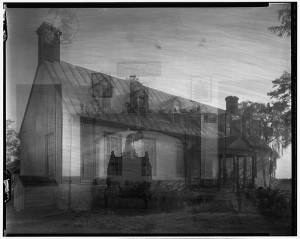
A double exposure of a house in Gloucester County, Virginia, I pulled from a public domain website. I don’t know why this image seems appropriate for this post, but it does.

